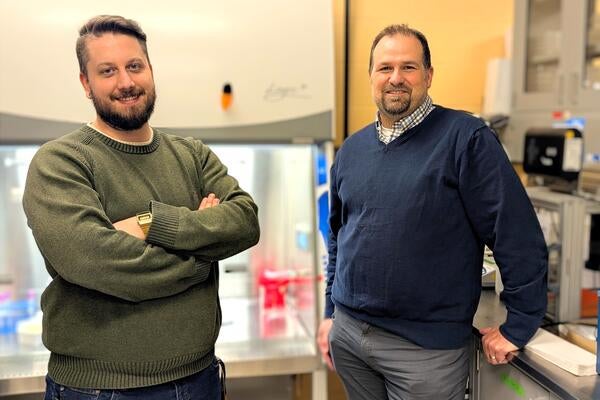
Q & A with the Experts: All that glitter is not gold
The stuff that gives cards, ornaments and decorations a holiday lustre does more than just gets everywhere

The stuff that gives cards, ornaments and decorations a holiday lustre does more than just gets everywhere
By Media RelationsGlitter is all over. The ubiquitous sparkles are synonymous with glamour and celebration, but that shimmer comes at a significant cost. Dr. Christian Euler, a professor in the Department of Chemical Engineering at the University of Waterloo, uses microbes in his lab to create sustainable swaps for non-biodegradable materials. He says there’s more to glitter than meets the eye.
 What is glitter made of?
What is glitter made of?
It’s commonly made of the same plastic as plastic bottles, and precision manufactured to have flat surfaces and specific optical properties. To get that shimmering effect, it’s coated in a metal, often aluminum.
Does glitter have an environmental effect?
Glitter is microplastics. It’s intentional microplastics. Microplastics reduce the ability of the ocean to store carbon. They reduce the ability of soil to store carbon. They have negative effects on vertebrates — amphibians and fish, in particular. Traditional plastics are oil-based with a big carbon footprint. Because the plastic is coated in metal, there's mining involved to extract those materials, though aluminum is about 98 per cent recycled.
How should we dispose of glitter?
Even if it goes into a landfill, it's possible for it to end up in waterways that will ultimately get into the ocean. Put it into a container that will not break down—glass or metal—and send it to the dump. Landfilling stuff is not ideal generally, but because of the recalcitrance of glitter, that's the best option. Replacing your current sources of glitter with sustainable ones is possible.
What are the alternatives?
A few companies make seaweed-based glitter. They replaced the plastic with seaweed and coat it in mica. Mica is a mineral that’s much more sustainable than a lot of the other options. Biodegradable glitter is found in some make-up, nail polish and food products. Companies tend to mention it on packaging, so consumers should check.

Read more
Engineering researchers team up to tackle the plastics pollution problem with microbial innovation and engineering design

Read more
15 University of Waterloo researchers have been named to the annual Highly Cited Researchers™ list for significant contributions to their specific fields of research

University of Waterloo Engineering master's student Liam Salass developed an AI-based system that improved puck detection when analyzing game video. (University of Waterloo)
Read more
University of Waterloo researchers make big strides in hockey analysis using game video
The University of Waterloo acknowledges that much of our work takes place on the traditional territory of the Neutral, Anishinaabeg, and Haudenosaunee peoples. Our main campus is situated on the Haldimand Tract, the land granted to the Six Nations that includes six miles on each side of the Grand River. Our active work toward reconciliation takes place across our campuses through research, learning, teaching, and community building, and is co-ordinated within the Office of Indigenous Relations.